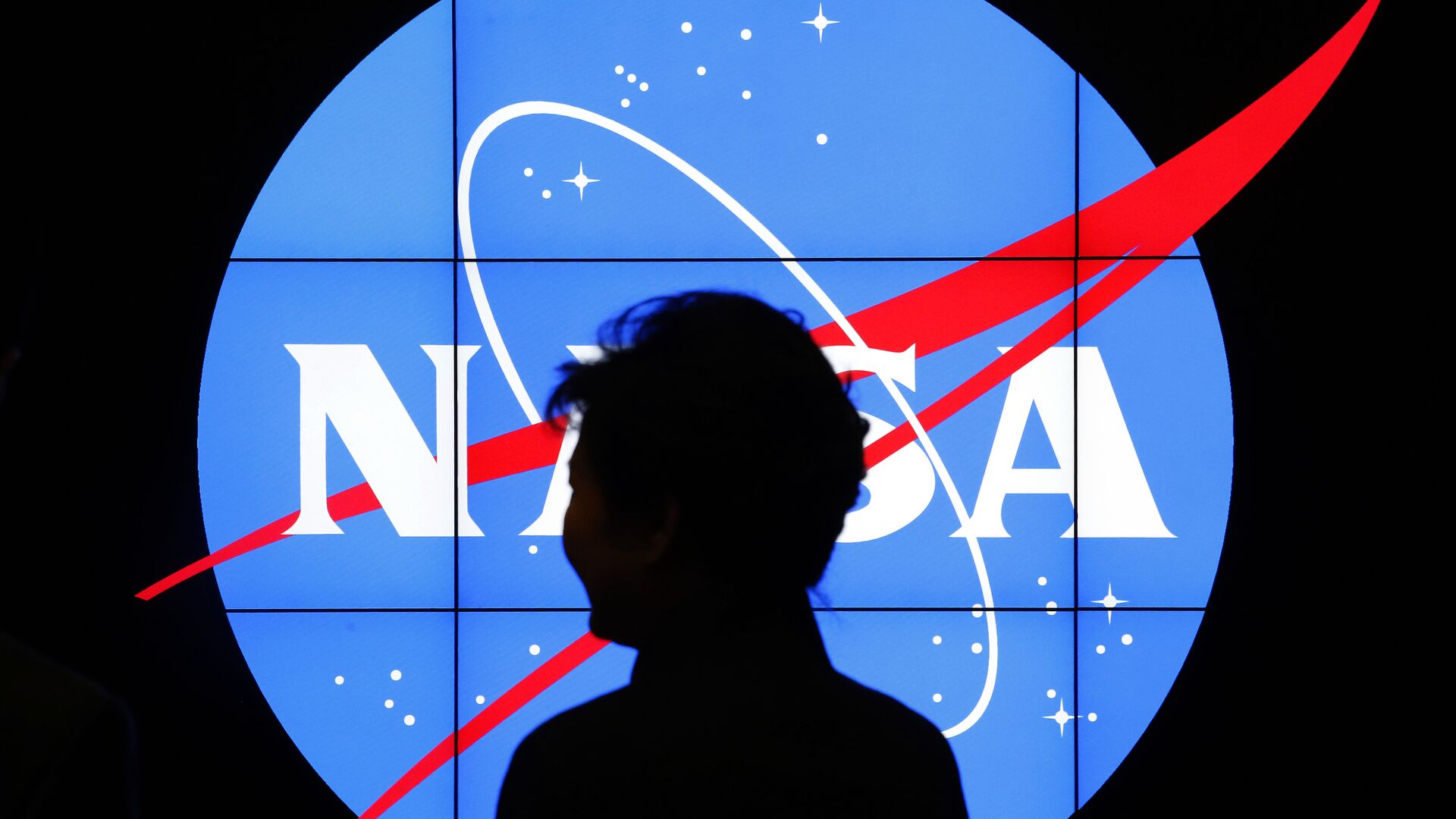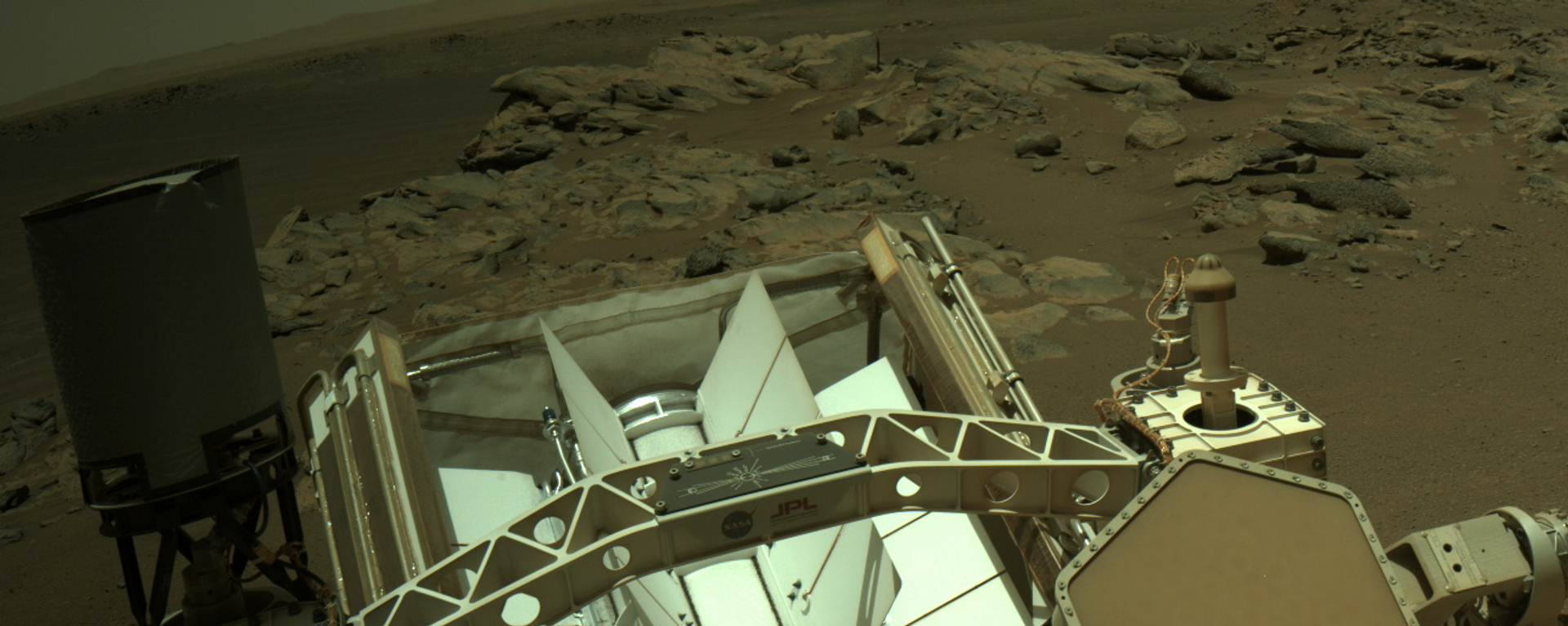https://sputnikglobe.com/20240622/nasa-innovation-slowed-down-by-bureaucracy-probably-will-not-land-humans-on-moon-in-2026-1119056617.html
NASA Unlikely to Land Humans on Moon in 2026 Due to Bureaucracy - Engineer
NASA Unlikely to Land Humans on Moon in 2026 Due to Bureaucracy - Engineer
Sputnik International
NASA’s innovative process has slowed down because the agency has become very bureaucratic and risk averse, US aerospace engineer Scott Walter told Sputnik.
2024-06-22T03:39+0000
2024-06-22T03:39+0000
2024-06-22T05:07+0000
beyond politics
nasa
science & tech
south pole
artemis ii
moon
https://cdn1.img.sputnikglobe.com/img/106097/57/1060975730_0:305:4732:2967_1920x0_80_0_0_2b13963b7e394fb3e1ae70ef794efedb.jpg
“The main problem that you see at NASA is you've got this huge bureaucracy, and they're kind of risk averse,” Walter said when asked why SpaceX is conducting a lot of testing while NASA has effectively remained in the background.Scott explained that another reason why NASA lags behind SpaceX is that it must satisfy all stakeholders and therefore cannot concentrate on one particular area but has to ensure that each congressional delegation gets a piece of the pie - a set-up that slows things down. Scott also said he hopes that SpaceX will inject a different sense of purpose and NASA will regain the old sense of urgency.Walter further noted that NASA will likely not be able to stick to its goal and land humans on the Moon in 2026, given that major components of the trip are still in process of being worked out.Walter pointed out that the mission also requires a lander, which is coming from SpaceX, but has not been tested yet. Another major issue for the success of the mission is that SpaceX needs to design a rocket that will get enough propellant to make it as far as the Moon, he said.Specialists have been able to do a propellant transfer from one tank to another internally but not yet from two different ships, which a goal that is at least a year away, Walter added. According to SpaceX Vice President Jessica Jensen, the company is expected to perform at least ten refueling flights.NASA targets September 2025 for Artemis II, the first crewed Artemis mission around the Moon, and September 2026 for Artemis III, to land the first astronauts near the lunar South Pole.The lunar South Pole, the so-called "dark side" of the Moon, is a more mountainous terrain with major craters.In 2021, NASA signed with SpaceX a $2.9 billion agreement to carry astronauts to lunar orbit and back. NASA targets September 2025 for Artemis II, the first crewed Artemis mission around the Moon, and September 2026 for Artemis III, to land the astronauts near the lunar South Pole. Cooperation in Space Likely to DecreaseThe necessary destruction of the old International Space Station (ISS) may result in reduced international cooperation in space and increased cases of individuals or countries building their own space stations, Walter said.Walter also said that the ISS is "getting pretty old" and the only options are either to bring the station down or boost it high in a very safe orbit that will not bother anyone."Almost like an orbiting graveyard with the idea of preserving it. We could have it as a museum in space for the future," Walter added.In April, NASA Administrator Bill Nelson said the space agency requested additional emergency funding from Congress to start preparing a spacecraft to deorbit the ISS and bring its remains safely to Earth after 2030 if space cooperation with Russia breaks down before then.Current plans anticipate that NASA and the Russian state space corporation Roscosmos will work closely together to safely deorbit the ISS so that its debris does not threaten any populated areas on Earth. However, given the current tensions in US-Russia relations, NASA cannot take for granted that the ongoing cooperation with Roscosmos will continue safely into the indefinite future.In May 2023, Nelson said that the ISS will be deorbited between 2030 and 2031.
https://sputnikglobe.com/20240418/nasa-postpones-mars-sample-project-and-seeks-alternatives-amid-budget-cuts-1117989316.html
south pole
Sputnik International
feedback@sputniknews.com
+74956456601
MIA „Rossiya Segodnya“
2024
Sputnik International
feedback@sputniknews.com
+74956456601
MIA „Rossiya Segodnya“
News
en_EN
Sputnik International
feedback@sputniknews.com
+74956456601
MIA „Rossiya Segodnya“
Sputnik International
feedback@sputniknews.com
+74956456601
MIA „Rossiya Segodnya“
nasa, us aerospace engineer scott walter, nasa artemis project, nasa bureaucracy, us space agency
nasa, us aerospace engineer scott walter, nasa artemis project, nasa bureaucracy, us space agency
NASA Unlikely to Land Humans on Moon in 2026 Due to Bureaucracy - Engineer
03:39 GMT 22.06.2024 (Updated: 05:07 GMT 22.06.2024) Exclusive
AUSTIN (Sputnik) - NASA’s innovative process has slowed down because the agency has become very bureaucratic and risk averse, US aerospace engineer Scott Walter told Sputnik.
“The main problem that you see at NASA is you've got this huge bureaucracy, and they're kind of risk averse,” Walter said when asked why SpaceX is conducting a lot of testing while NASA has effectively remained in the background.
Scott explained that another reason why NASA lags behind SpaceX is that it must satisfy all stakeholders and therefore cannot concentrate on one particular area but has to ensure that each congressional delegation gets a piece of the pie - a set-up that slows things down.
Scott also said he hopes that SpaceX will inject a different
sense of purpose and NASA will regain the old sense of urgency.
Walter further noted that NASA will likely not be able to stick to its goal and land humans on the Moon in 2026, given that major components of the trip are still in process of being worked out.
"That's probably a stretch goal to be able to get in 2026. Just look at all the delays. I don't know if they figured out the spacesuits yet, because I know there was a problem with that," Walter aid. "So it might be a rather aggressive goal based on a lot of other things."
Walter pointed out that the mission also requires a lander, which is coming from SpaceX, but has not been tested yet. Another major issue for the success of the mission is that SpaceX needs to design a rocket that will get enough propellant to make it as far as the Moon, he said.
Specialists have been able to do a propellant transfer from one tank to another internally but not yet from two different ships, which a goal that is at least a year away, Walter added. According to SpaceX Vice President Jessica Jensen, the company is expected to perform at least ten refueling flights.
NASA targets September 2025 for Artemis II, the first crewed Artemis mission around the Moon, and September 2026 for Artemis III, to land the first astronauts near the lunar South Pole.
The lunar South Pole, the so-called "dark side" of the Moon, is a more mountainous terrain with major craters.
In 2021, NASA signed with SpaceX a $2.9 billion agreement to carry astronauts to lunar orbit and back. NASA targets September 2025 for Artemis II, the first crewed Artemis mission around the Moon, and September 2026 for Artemis III, to land the astronauts near the lunar South Pole.
Cooperation in Space Likely to Decrease
The necessary destruction of the old International Space Station (ISS) may result in reduced international cooperation in space and increased cases of individuals or countries building their own space stations, Walter said.
"Hopefully, you get back to cooperation, but unfortunately, what you're probably going to see is there's going to be different islands of people, of countries developing these things. They've all learned a lot about how to build a space station and maybe how not to build one," Walter said when asked if international cooperation at the ISS is likely to continue.
Walter also said that the ISS is "getting pretty old" and the only options are either to bring the station down or boost it high in a very safe orbit that will not bother anyone.
"Almost like an orbiting graveyard with the idea of preserving it. We could have it as a museum in space for the future," Walter added.
In April, NASA Administrator Bill Nelson said the space agency requested additional emergency funding from Congress to start preparing a spacecraft to deorbit the ISS and bring its remains safely to Earth after 2030 if space cooperation with Russia breaks down before then.
Current plans anticipate that NASA and the Russian state space corporation Roscosmos will work closely together to safely deorbit the ISS so that its debris does not threaten any populated areas on Earth. However, given the current tensions in US-Russia relations, NASA cannot take for granted that the ongoing cooperation with Roscosmos will continue safely into the indefinite future.
In May 2023, Nelson said that the ISS will be deorbited between 2030 and 2031.
Scott Walter is aerospace and mechanical engineer with more than 40 years of experience in the industry. Walter currently works as Chief Tehnical Advisor at the 3D simulation software developer firm Visual Components.



